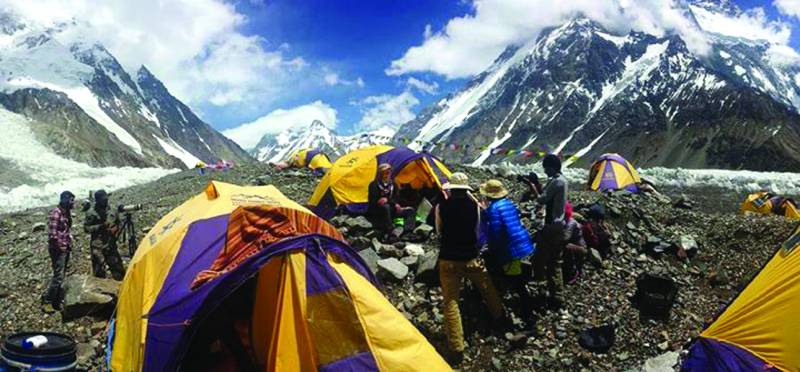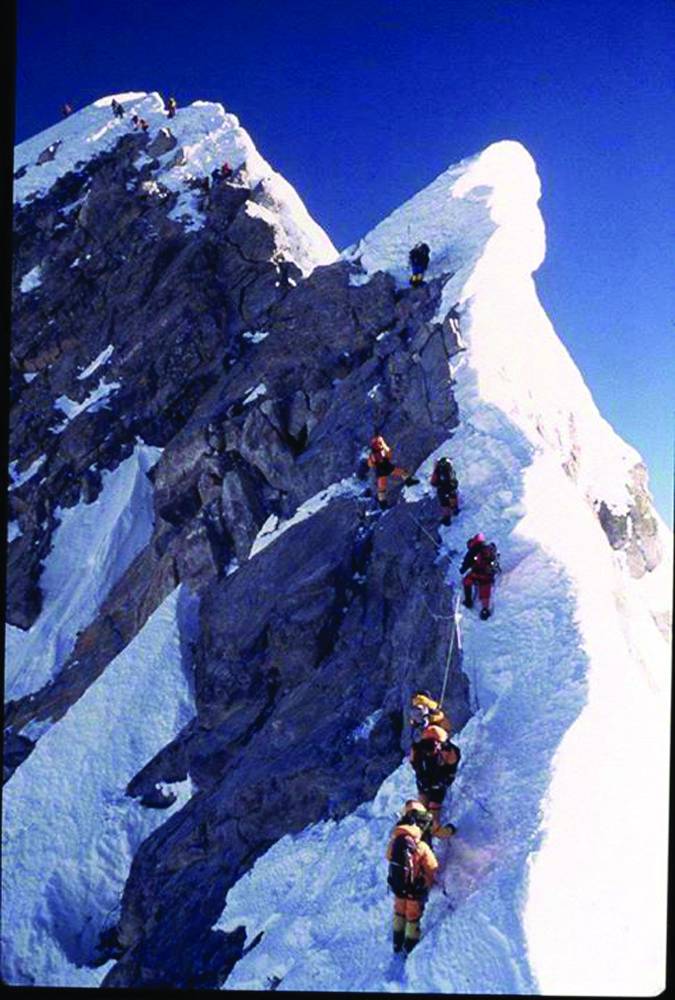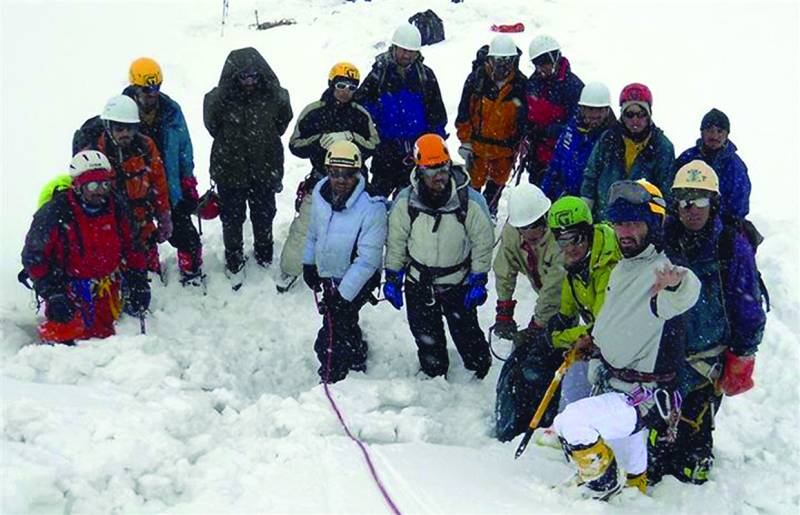By Sadia Zaheer & Faizan Javed
Pakistan is a country which is blessed with rich culture, beautiful lakes, scenic valleys and beautiful mountains. When it comes to tourism, it can be a massive source of earning but unfortunately this side is totally ignored by the government. Terrorism is the one major reason for the decline in Pakistan.
This year to promote tourism, Pakistan’s first International Mountain Film Festival at was organised by Punjab government in collaboration with City District Government Lahore, Eyebex Films, Tourism and Development Cooperation of Pakistan, Parks and Horticulture Authority. The aim of the event held at Lahore Arts Council’s Alhamra halls was to showcase the beauty and grandeur of Pakistan’s mountains and the different cultures and traditions of the people living there.
People from 12 countries including India participated in the two-day event. Thirty two films out of 500 submissions from 80 countries were showcased at the festival. A large number of people from all walks of life attended the festival. The audiences were amazed to see the beautiful mountains of Pakistan.
The festival screened films with themes ranging from mountain sports, culture, adventure and nature. It also included a photography exhibition. Tour operators had set up their stalls. The interactive talk sessions with travel writers, film directors and mountaineers were informative and thought provoking.
The photo exhibition showcased the work of five adventure and travel photographers Kamran Saleem, Atif Saeed, Rizwan Siddique, Hamid Hussain and Shah Zaman Baloch. 71 photographs had been put on display. Every film had its own story to unfold and was made with different scenario. The documentaries depicting the culture of Kalaash revealed the lifestyle of tribal people in Valley of Hindukhush Mountains. One film depicted story of a man who fights against the odds to expose the harmful effects of climate change.
The most popular film was ‘K2, the Invisible Footmen,’ which highlighted everyday sacrifices of the unsung porters of K2. It was the only filmed that was screened outside the hall due to large number of viewers. Many dignitaries ignored their protocols and sat under open sky to watch the film that created a great ambiance at the venue of Lahore Arts Council.
There were panel discussions that were held in pack to capacity halls. Adventure photographer and film maker Shahid Zaidi shared his experiences and how his passion for travelling evolved.
In another panel discussion Salman Rashid, a Fellow of the Royal Geographic Society, briefed the audience about why people love to travel to the mountains of Pakistan and how it was challenging and full of adventure.
In another session Samina Peerzada, Hassan Armaghan and Faisal Rehman discussed the resurgence of cinema in Pakistan.
The festival ended with an award distribution ceremony among the best films screened and a cultural show. The festival was highly appreciated by the people.
With the successful holding of this festival it is hoped that more such events are held in future to promote tourism in Pakistan. The films screened for the first time in Pakistan made the people realize what difficulties mountaineers have to face and what can be done to attract more tourists. Such events give a positive image of Pakistan and also help in promoting Pakistan’s tourism internationally.
Here are some of the session held at PIMFF2015
K2 and the invisible footmen
K2 and the invisible footmen was the most well received screening at the festival. This film was based on the summit of K2 Mountain which is known as the highest mountain of Pakistan and many passionate people wish to summit it.
Directed by Lara Lee, the film predicted the everyday sacrifices of the unsung porters of the K2 and those who summit it with full courage and without fear. The film also follows the first official all Pakistani porters climbing team, made-up of former porters and takes you into the lives of porters who climb the world’s second highest peak with heavy baggage as mean of supporting their families and this is the only source of their earning. One learns how people spend their lives high up there in the mountains. Summer is the only season for them to earn.
In 2008 a tragic disaster on K2 claimed the lives of 11 mountaineers. Four of those who lost their lives in the disaster were porters hired to carry equipment and provision of foreign climbing expeditions. They risk their lives to earn money and support their family members.
During the panel discussion, Lara Lee said that Pakistan is not all about the terrorism; love the landscape and people of Pakistan. “Pakistan is blessed with one of the most unique mountain ranges in the world. What it did not have was an international mountain film festival that could showcase the grandeur and potential of Pakistani mountains to a wider international audience,” Lee was of the view.
“It took more than a month to shoot this film. Photographer, filmmakers the entire crew were Pakistanis and they have done a tremendous job,” Lee added.
“It was an amazing film. I hope that in future filmmakers will highlight other critical issues as well,” a participant Areeba Mansab said while talking to Sunday Plus.
K2 expeditions are not possible without the skilled indigenous porters who provide support and expertise throughout the dangerous ascent. Whether hauling supplies to base camp or securing safety ropes at 28,000 feet, these porters do some of the most essential work of mountaineering.
The film was dedicated to Amir Mehdi and all other porters. Mehdi is the highest altitude porter from Pakistan who lost his toes to frostbite while supporting the first successful ascent of K2 in 1954.
Deosai, the last sanctuary
The screening of ‘Deosai, the last sanctuary’ was a documentary film on brown bears and their struggle of survival in Deosai National Park. Nisar Malik.
The documentary focuses on the endangered brown bear found in the Deosai Plateau, located in the Himalayan region. The Deosai National Park is the sole habitat of brown bear in South Asia. The film lays emphasis on protecting the park and its habitat, so that future generations can also see this wonderful place.
The brown bear is one of the endangered species living in Deosai National Park and their numbers have been decreasing every year. Currently there are about 42-45 only. This is happening because of the increasing tourists, livestock shepherds hunting them and lack of funds to provide them protection.
Once 10,000 bears used to live in Northern Pakistan and Kashmir but today it the most threatened species in South Asia. They are now found only in small pockets of India, Pakistan, Afghanistan and China. To save this rare species, Deosai National Park was established in 1993.
The documentary not only shows the untouched beauty of the area but also highlights various problems faced by the local community. It shows the flora and fauna of the area and creates awareness about the importance of preserving ecology of the area. The film also captures some rare and outstanding images of the land and people.
The Deosai Plateau is located on the boundary of Karakoram and the western Himalayas, and at no point it is less than 4000 meters above sea level which remains covered with snow for eight months. The rest of the year, it hosts a range of beautiful flowers of all hues and colours, but not a single tree is found in this plateau spread over 3000 sq. km. Over three hundred and forty spices of plants are spread across these plains and sounds of 200 types of birds fill the air.
The Cave Connection
The film cave connection has not only earned popularity in its country New Zealand but also across Europe and North America. Deep underground in the wilderness of New Zealand, largely unexplored cave systems attract adventurers and cavers from around the globe. Kieran McKay, one of the most accomplished cavers in the southern hemisphere, and his team of like-minded adventurers set out on an almost impossible journey to try to find a connection between two cave systems. The documentary showcased the dramatic journey of Kieran Mckay and his team. Their goal was to discover the deepest cave in the Southern Hemisphere by finding a relationship between two daunting cave systems, facing threats like the sudden inrush of water and a total lack of communication with the world outside.
Though there were many hurdles inside but still the passion of the team remained high. The temperature was extremely cold but they spent hours below the ground, often getting wet, dirty and cold, squeezing through narrow tunnels and abseiling down waterfalls.
This film has been honoured with key awards at the NZ Mountain Film Festival as well as Switzerland’s Diablerets Film Festival, where it won the top prize in the “Exploits and Adventures” category.








